Related Research Articles

Henry VIII was King of England from 22 April 1509 until his death in 1547. Henry is best known for his six marriages, and for his efforts to have his first marriage annulled. His disagreement with Pope Clement VII about such an annulment led Henry to initiate the English Reformation, separating the Church of England from papal authority. He appointed himself Supreme Head of the Church of England and dissolved convents and monasteries, for which he was excommunicated by the pope.

Thomas Cranmer was a leader of the English Reformation and Archbishop of Canterbury during the reigns of Henry VIII, Edward VI and, for a short time, Mary I. He helped build the case for the annulment of Henry's marriage to Catherine of Aragon, which was one of the causes of the separation of the English Church from union with the Holy See. Along with Thomas Cromwell, he supported the principle of royal supremacy, in which the king was considered sovereign over the Church within his realm.

Anne Boleyn was Queen of England from 1533 to 1536, as the second wife of King Henry VIII. The circumstances of her marriage and of her execution by beheading for treason and other charges made her a key figure in the political and religious upheaval that marked the start of the English Reformation. Anne was the daughter of Thomas Boleyn, 1st Earl of Wiltshire, and his wife, Elizabeth Howard, and was educated in the Netherlands and France, largely as a maid of honour to Queen Claude of France. Anne returned to England in early 1522, to marry her Irish cousin James Butler, 9th Earl of Ormond; the marriage plans were broken off, and instead, she secured a post at court as maid of honour to Henry VIII's wife, Catherine of Aragon.
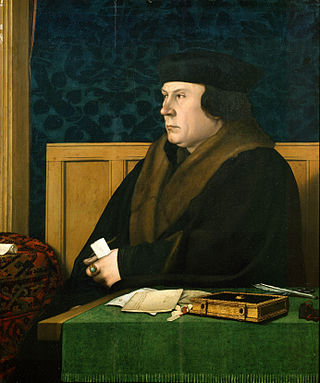
Thomas Cromwell, briefly Earl of Essex, was an English lawyer and statesman who served as chief minister to King Henry VIII from 1534 to 1540, when he was beheaded on orders of the king, who later blamed false charges for the execution.
The Six Wives of Henry VIII is a series of six television plays produced by the BBC and first transmitted between 1 January and 5 February 1970. The series was later aired in the United States on CBS from 1 August to 5 September 1971 with narration added by Anthony Quayle. The series was rebroadcast in the United States without commercials on PBS as part of its Masterpiece Theatre series.
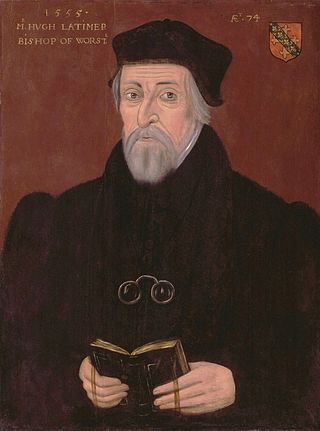
Hugh Latimer was a Fellow of Clare College, Cambridge, and Bishop of Worcester during the Reformation, and later Church of England chaplain to King Edward VI. In 1555 under the Catholic Queen Mary I he was burned at the stake, becoming one of the three Oxford Martyrs of Anglicanism.

Thomas Howard, 3rd Duke of Norfolk, was a prominent English politician and nobleman of the Tudor era. He was an uncle of two of the wives of King Henry VIII, Anne Boleyn and Catherine Howard, both of whom were beheaded, and played a major role in the machinations affecting these royal marriages. After falling from favour in 1546, he was stripped of his Dukedom and imprisoned in the Tower of London, avoiding execution when Henry VIII died on 28 January 1547.
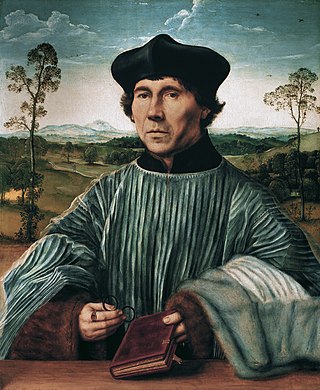
Stephen Gardiner was an English Catholic bishop and politician during the English Reformation period who served as Lord Chancellor during the reign of Queen Mary I and King Philip.

Thomas Wriothesley, 1st Earl of Southampton, KG was an English peer, secretary of state, Lord Chancellor and Lord High Admiral. A naturally skilled but unscrupulous and devious politician who changed with the times and personally tortured Anne Askew, Wriothesley served as a loyal instrument of King Henry VIII in the latter's break with the Catholic church. Richly rewarded with royal gains from the Dissolution of the Monasteries, he nevertheless prosecuted Calvinists and other Protestants when political winds changed.

Anne Askew, married name Anne Kyme, was an English writer, poet, and Anabaptist preacher who was condemned as a heretic during the reign of Henry VIII of England. She and Margaret Cheyne are the only women on record known to have been both tortured in the Tower of London and burnt at the stake.
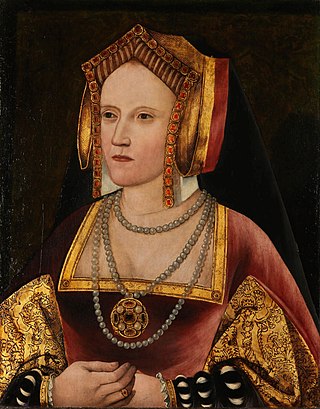
In common parlance, the wives of Henry VIII were the six queen consorts of King Henry VIII of England between 1509 and his death in 1547. In legal terms, Henry had only three wives, because three of his marriages were annulled by the Church of England. However, he was never granted an annulment by the Pope, as he desired, for Catherine of Aragon, his first wife. Annulments declare that a true marriage never took place, unlike a divorce, in which a married couple end their union. Along with his six wives, Henry took several mistresses.
Francis Dereham was a Tudor courtier whose involvement with Henry VIII's fifth Queen, Catherine Howard, in her youth, prior to engagement with the king was eventually found out and led to his arrest. The information of Dereham having a relationship with Howard displeased King Henry to such great lengths he arranged the executions of all involved.
Nicholas Shaxton was Bishop of Salisbury. For a time, he had been a Reformer, but recanted this position, returning to the Roman faith. Under Henry VIII, he attempted to persuade other Protestant leaders to also recant. Under Mary I, he took part in several heresy trials of those who became Protestant martyrs.
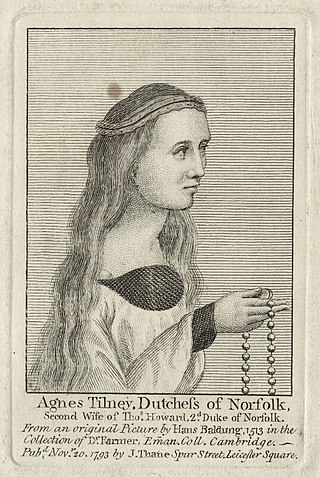
Agnes Howard was the second wife of Thomas Howard, 2nd Duke of Norfolk. Two of King Henry VIII's queens were her step-granddaughters, Anne Boleyn and Katherine Howard. Catherine Howard was placed in the Dowager Duchess's care after her mother's death.

Henry VIII is a two-part British television serial produced principally by Granada Television for ITV from 12 to 19 October 2003. It chronicles the life of Henry VIII of England from the disintegration of his first marriage to an aging Spanish princess until his death following a stroke in 1547, by which time he had married for the sixth time. Additional production funding was provided by WGBH Boston, Powercorp and the Australian Broadcasting Corporation.

Henry VIII and His Six Wives is a 1972 British historical film adaptation, directed by Waris Hussein, of the BBC 1970 six-part miniseries The Six Wives of Henry VIII. Keith Michell, who plays Henry VIII in the TV series, also portrays the king in the film. His six wives are portrayed by different actresses, among them Frances Cuka as Catherine of Aragon, and Jane Asher as Jane Seymour. Donald Pleasence portrays Thomas Cromwell and Bernard Hepton portrays Archbishop Thomas Cranmer, a role he had also played in the miniseries and briefly in its follow-up Elizabeth R.

Mary FitzRoy, Duchess of Richmond and Somerset, born Lady Mary Howard, was the only daughter-in-law of King Henry VIII of England, being the wife of his only acknowledged illegitimate son, Henry FitzRoy, 1st Duke of Richmond and Somerset.
Lady Elizabeth Stafford was an English aristocrat. She was the eldest daughter of Edward Stafford, 3rd Duke of Buckingham and Lady Eleanor Percy. By marriage she became Duchess of Norfolk. Her abusive marriage to Thomas Howard, 3rd Duke of Norfolk, created a public scandal.

Catherine Howard, also spelt Katheryn Howard, was Queen of England from 1540 until 1541 as the fifth wife of Henry VIII. She was the daughter of Lord Edmund Howard and Joyce Culpeper, a cousin to Anne Boleyn, and the niece of Thomas Howard, 3rd Duke of Norfolk. Thomas Howard was a prominent politician at Henry's court, and he secured her a place in the household of Henry's fourth wife, Anne of Cleves, where she caught the King's interest. She married him on 28 July 1540 at Oatlands Palace in Surrey, just 19 days after the annulment of his marriage to Anne. He was 49, and she was between 15 and 21 years old.
Mary Hall was an English gentlewoman whose report of the 'light' behaviour in her youth of Henry VIII's fifth Queen, Catherine Howard, initiated the process which ended with Queen Catherine's execution.
References
- Leithead, Howard (2009). Cromwell, Thomas, Earl of Essex (b. in or before 1485, d. 1540). Oxford Dictionary of National Biography.
- Ryrie, Alec (2008). Lassells [Lascelles], John (d. 1546), courtier and religious activist. Oxford Dictionary of National Biography.
- Weir, Alison (1991). The Six Wives of Henry VIII. New York: Grove Weidenfeld.